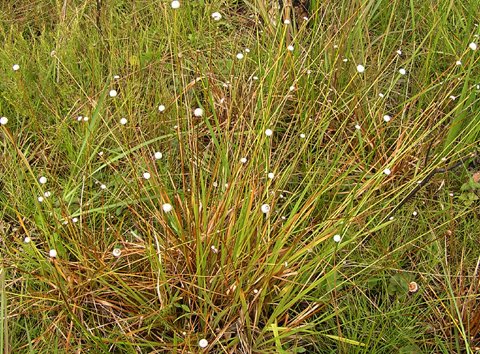Eriocaulon australe - Hatpins
Eriocaulon australe, commonly known as Hatpins, is a small, tufted perennial plant native to New South Wales and Queensland. It typically grows to a height of 0.1 to 0.3 meters and is commonly found in wet habitats such as swamps, bogs, and along the edges of watercourses.
The plant is characterized by its slender, grass-like leaves and distinctive white, pin-like flower heads that appear on long stalks during spring and summer. Eriocaulon australe plays an important role in wetland ecosystems by helping to stabilize soil and providing habitat for aquatic and semi-aquatic wildlife. Its delicate structure and ecological significance make it a valuable species for wetland restoration and conservation projects.
Eriocaulon australe, commonly known as Hatpins, is a small, tufted perennial plant native to New South Wales and Queensland. It typically grows to a height of 0.1 to 0.3 meters and is commonly found in wet habitats such as swamps, bogs, and along the edges of watercourses.
The plant is characterized by its slender, grass-like leaves and distinctive white, pin-like flower heads that appear on long stalks during spring and summer. Eriocaulon australe plays an important role in wetland ecosystems by helping to stabilize soil and providing habitat for aquatic and semi-aquatic wildlife. Its delicate structure and ecological significance make it a valuable species for wetland restoration and conservation projects.
Eriocaulon australe, commonly known as Hatpins, is a small, tufted perennial plant native to New South Wales and Queensland. It typically grows to a height of 0.1 to 0.3 meters and is commonly found in wet habitats such as swamps, bogs, and along the edges of watercourses.
The plant is characterized by its slender, grass-like leaves and distinctive white, pin-like flower heads that appear on long stalks during spring and summer. Eriocaulon australe plays an important role in wetland ecosystems by helping to stabilize soil and providing habitat for aquatic and semi-aquatic wildlife. Its delicate structure and ecological significance make it a valuable species for wetland restoration and conservation projects.

